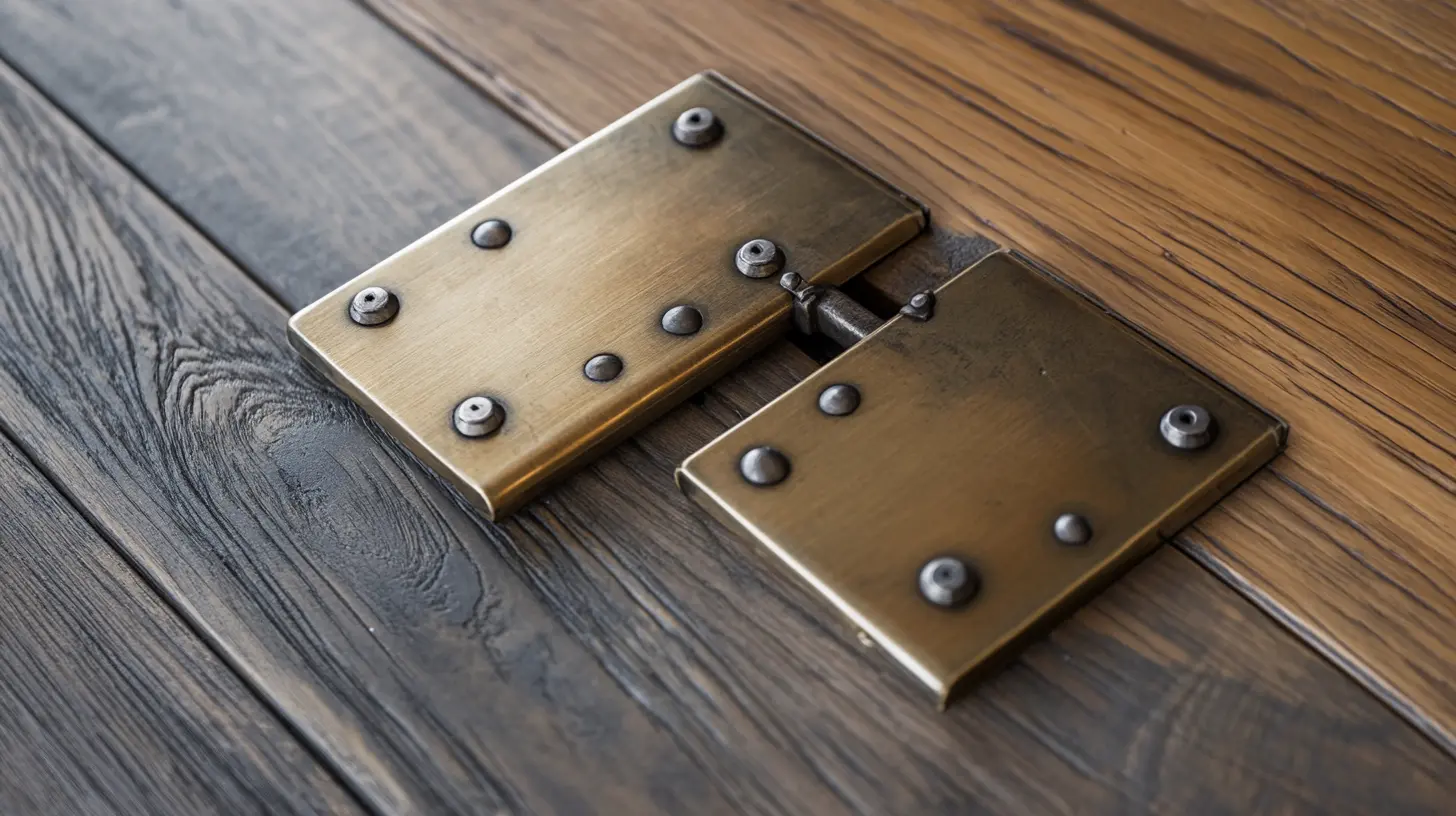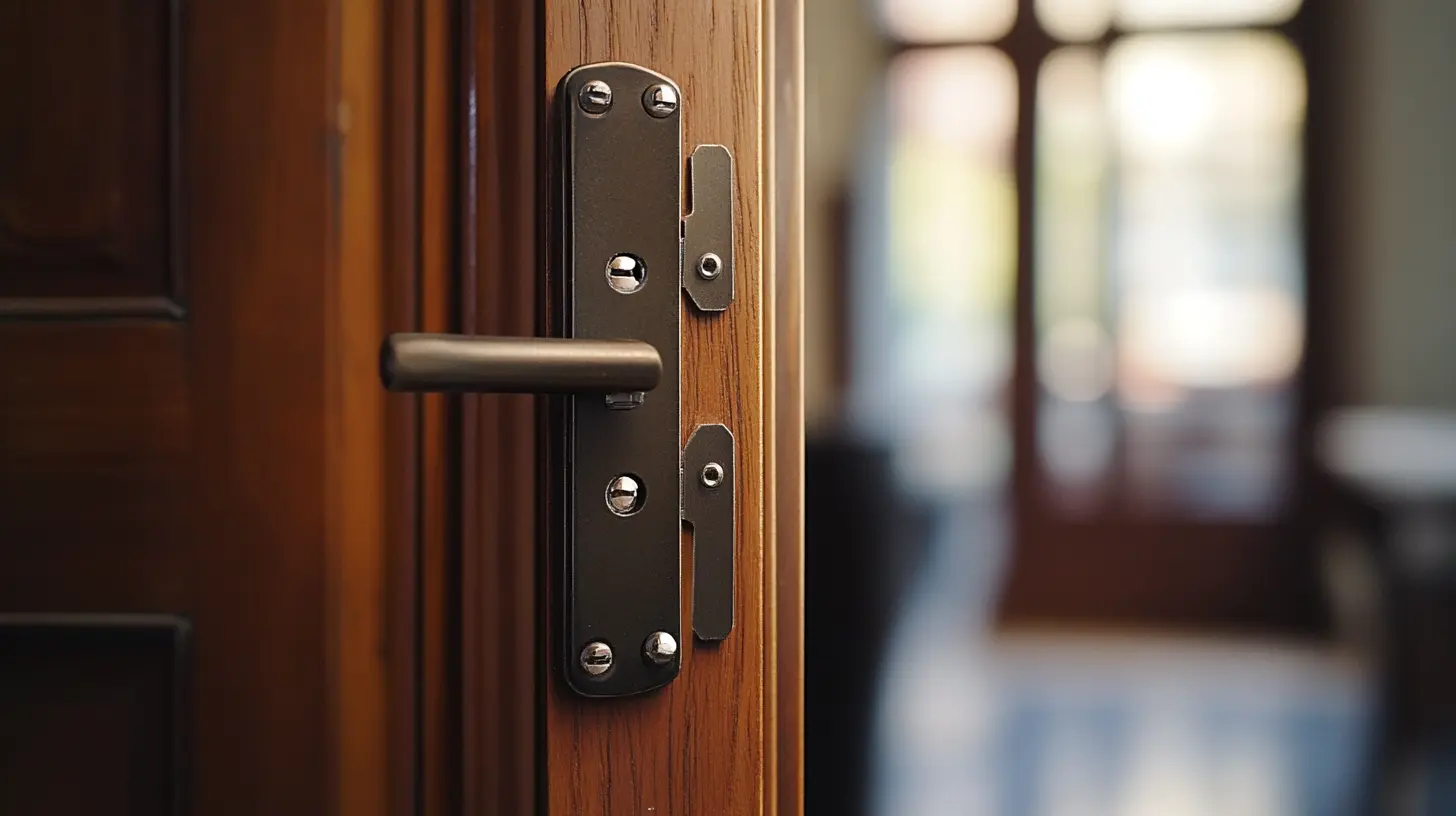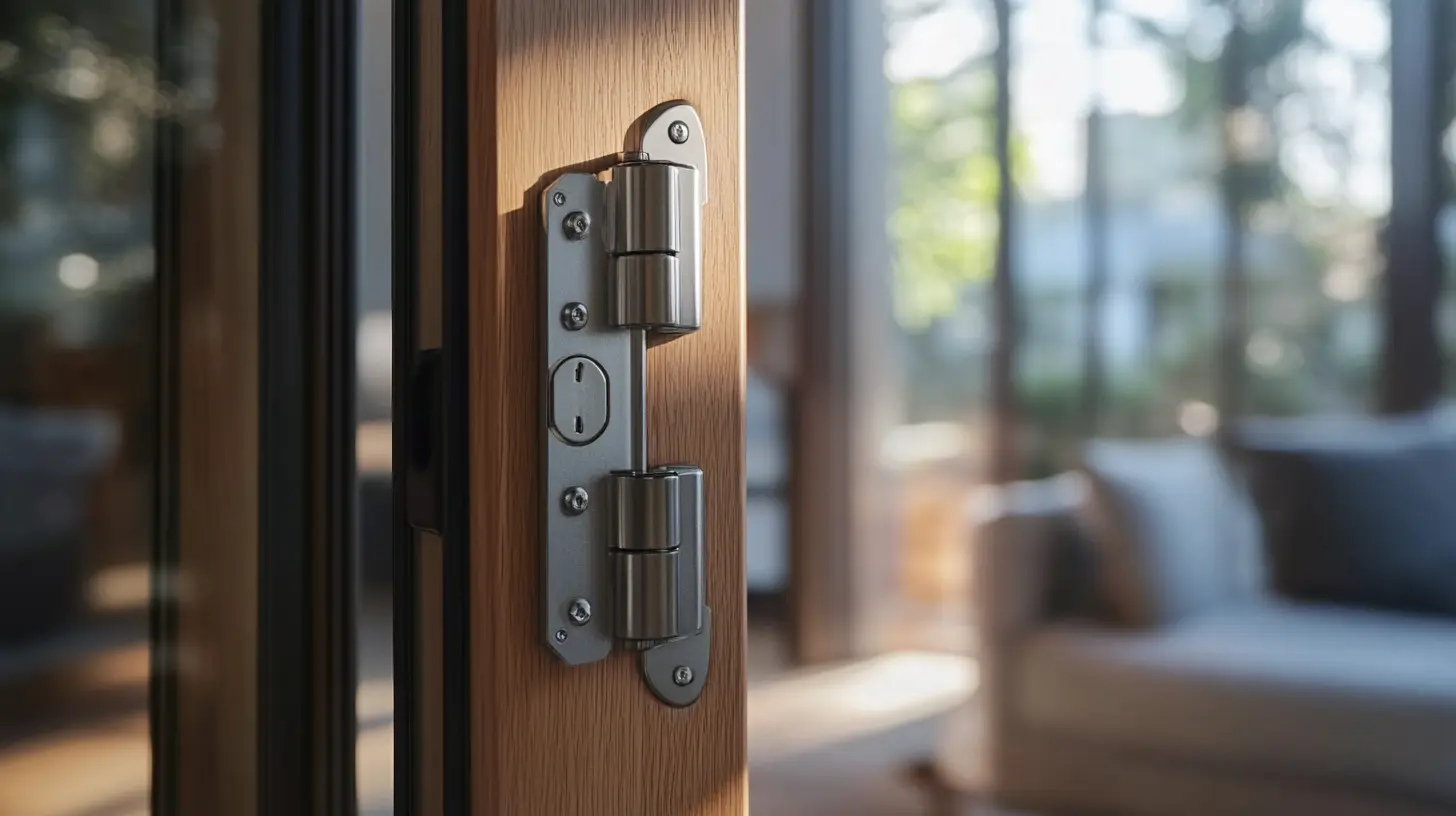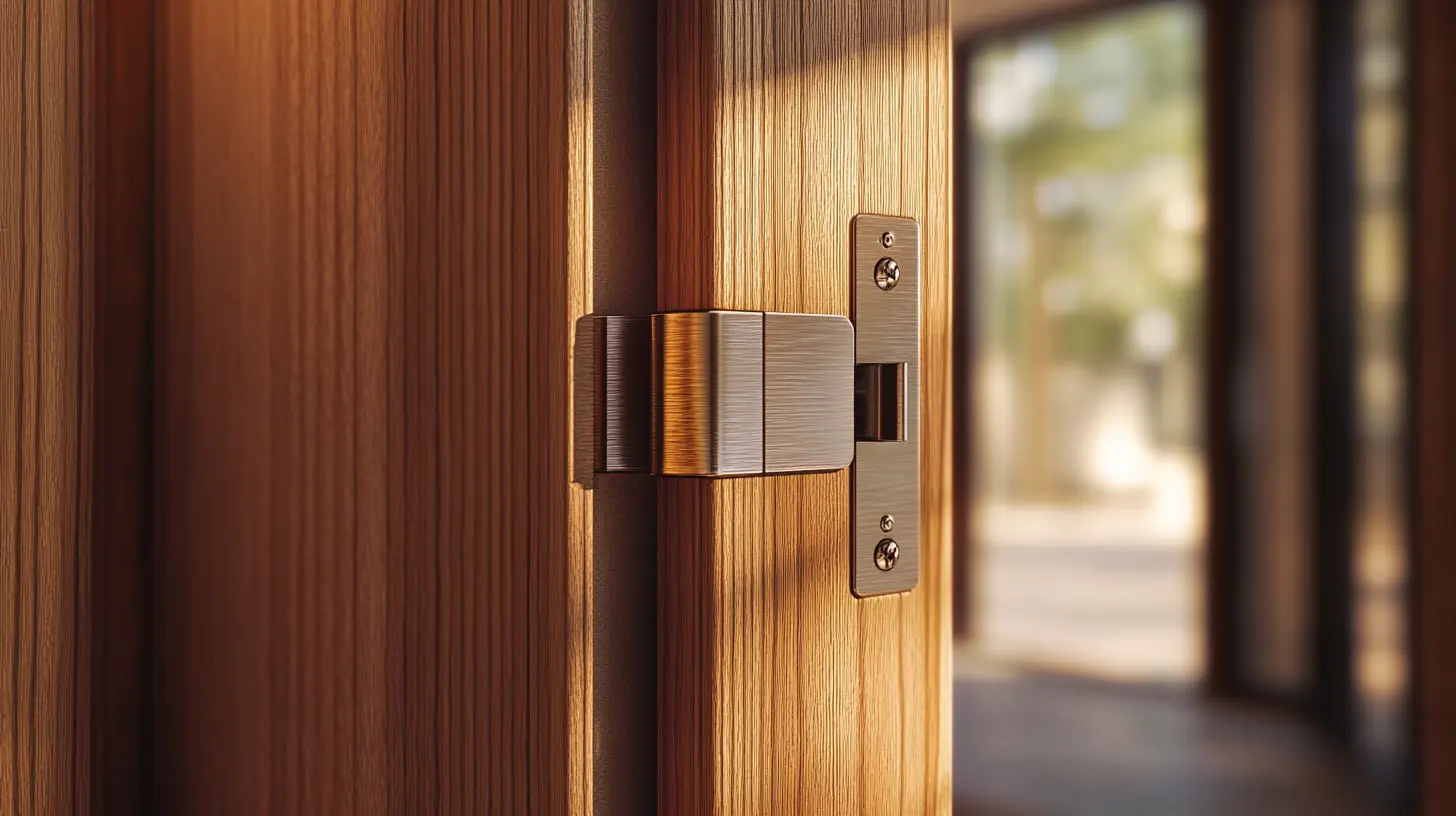Leave Your Message
Concealed Door Hinges have gained importance as modern-day essentials to beautify and make contemporary interiors operational. Recent market studies anticipate accelerated growth trends in concealed hinges owing to current trends in minimalist design and the maximization of space. The global market for architectural hardware was valued at over USD 76 billion in 2022, and Hidden Door Hinges are going to be significant in this growth. Therefore finding sufficient knowledge about the standards and specifications for these components is pertinent, as global buyers are looking for novel solutions that exhibit a marriage of aesthetic elegance and durability.
Guangdong Canhuang Precision Hardware Co., Ltd. has worked hard for nearly two decades, honing the YOUDO brand as a key player in whole-house quality hardware, well-known throughout the industry. As we continue this expansion across five continents with brand agents, we are committed to giving worldwide buyers the knowledge needed to make the right choices on Hidden Door Hinges for complete project realization in design and dependable operation.

An importance of hidden door hinges in modern design is aesthetics; that is, it also plays a great role in modern spaces since such types of hinges add to the sleek and clean appearance of rooms. These high-tech innovations are often fitted into the walls or adjacent to walls. These open the doorway between two rooms but still create a minimalist appearance. Such hinges erase the intrusive visual clutter that traditional hinges provide, thus allowing designers to create a cohesive space that echoes the modernism they have incorporated into their designs. These are much more pronounced while designing the interior regions, be it commercial or residential, where every object contributes to the total atmosphere. Thus, hidden door hinges entirely match the job description of modern-day architecture. They're just ideal for maximizing the versatility of the design in the construction process as two doors can swing open in ways that flow between them in terms of light and movement. For instance, pivot hinges can have large, heavy doors which can be striking features in a room without compromising aesthetics. Hidden door hinges are ever more significant as inspirations for contemporary creation become more bold and innovative in their scope, as they afford practical solutions while leaving freedom for experimentation embraced by the architects and designers. These hinges, moreover, can also be found in different finishes and materials, perfectly accommodating different design styles-from ultra-modern to industrial chic. Thus, in itself, this adaptability to the maximum will enable hidden door hinges to become a fundamental component in the lifetime landscape of interior design, serving a wide variety of preferences and requirements of the project. As consumers yearning for more refined and efficient design continue to batter at the door, the relevance of hidden door hinges in modern architecture stays steadfast.

Selection criteria for hidden door hinges definitely involve global buyers focusing on quality aspects regarding more than functionality but aesthetic appeal as well. Definitely, one of the features will be that of material durability; high-quality hidden door hinges will be made of strong materials such as stainless steel or brass that resist corrosion and wear. Longevity is assured, and these materials keep their performance even in various environmental conditions, which makes them perfectly suited for interior or exterior use.
Another such feature is the hinge construction. Quality hidden hinges come with really smooth pivot points for seamless door movement. This is crucial to maintain the sleek look of hidden hinges, all while the experience remains user-friendly. Adjustable features can also come handy, allowing adjustment according to varying weights of doors-however, this kind of door can really be well with aesthetics of flush doors and minimize the gap by offering a clean, modern look.
The load capacity must also be considered for hidden door hinges. Buyers must check if the hinges can take up the weight of the doors with which they will use them. High strength hinges give adequate support to prevent sagging and offsetting after a period of use. Also, high-quality hinges are warrantied, which shows faith in the product by the manufacturer, and provides peace of mind to consumers spending on long time solutions. While navigating through seamless choices, buyers should opt for these key functions for an informed decision in hidden door hinge purchasing.

The material of hidden door hinges is one of the key influencers while choosing components for durability and performance. All the different materials have their own merits in the production of buried hinges and use them in very different ways. For instance, stainless steel is extremely popular because it has good resistance to atmospheric corrosion, which makes it an excellent material choice for somewhere with lots of moisture or for outdoor applications. Besides that, stainless steel is usually strong enough to withstand use after use and still maintain the strength of the hinge.
Then the next in the material list could be brass, apart from having a very usable aesthetic look in decoration, since it is naturally antimicrobial and hence could be useful for settings that require some higher hygiene standards, such as hospitals or kitchens or with brass hinges. Strength by inherent quality also ensures that such hinges operate for a longer time without as much disturbance in performance.
For the customer who wants to have the most cost-effective combination of durability, polymer-based hinges can now be considered as a modern version. These materials are not very heavy; they are also not affected or destroyed by most environmental stressors, for example, chemicals and UV rays. Since these materials do not rust or corrode easily compared to other conventional hinges, polymer hinges are excellent for long-term installations in almost maintenance-free applications, thus reducing the total cost and increasing the life expectancy of the installed hardware. Buyers need to consider the type of environment they are trying to address when choosing one material above another to get the most suitable material in their hidden door hinges.

For their aesthetic appeal and functional advantages, hidden door hinges are steadily gaining prominence all over the world. As the products are being evaluated by global buyers, it is equally important to understand the various standards and regulations that govern their usage. Different countries uphold certain guidelines which address safety, performance, and environmental compliance; non-adherence to them might destroy the sourcing decisions. For example, standards for construction material, load-bearing capacity, and installation methods differ massively across regions.
Recently, in various industries, there have been changes to standards showcasing an increasing importance on safety and environmental responsibility. A good case would be the stringent regulations imposed by China on handling hazardous materials and environmental protection concerning makers of hidden door hinges. These regulations now require checks and documentation to ensure products comply with safety and sustainable needs free of any complications.
Buyers ought to give suppliers priority who are aware of and comply with these international standards. This not only diminishes risks associated with regulatory noncompliance but also helps position companies favorably within their markets. A high degree of awareness of this set of regulations allows for procurement decisions based on common knowledge and thus facilitates supply chain operations and improves end consumers' trust in their products.
Even in very recent times, hidden hinges have been seen as indispensable for perfecting functionality and visual appeal in modern architecture. These hidden hinges, with their clean lines and concealment of the sturdiness and functional features of a door, match the design philosophy of minimalism. As per recent market observations, the concealed hinges market is predicted to grow from the year 2023 to the year 2028 with the growth rate of 5.3% CAGR because of high demand in residential and commercial use.
To secure optimal installation, it is crucial to consider the precise alignment and leveling of the doors. Newer methods of installation emphasize the need for advanced tools, such as laser alignment devices. This kind of installation ensures that hinges are fitted with millimetric precision and thus enables increased durability and aesthetic pleasing of doors. According to a report issued by the Architectural Hinges Association, hidden hinges properly installed can increase the life of door systems by up to 30% – indeed a worthy investment for builders and homeowners.
More hinge systems truly being made with the time will see the advent of these systems. Gradually, smart technology is coming into effect; with automated options, installation techniques are changing for more functionality. The need to know about proper installation will always remain to anyone in the construction industry who wants to be ahead of the technology, thus contributing to an enhanced user journey and satisfaction.
Hidden door hinges present global buyers with a particular set of challenges, often resulting in sourcing complications. Compatibility issues arise because one of the greatest challenges emanates from standards that are not universal from country to country. According to a new report published by the International Organization for Standardization (ISO), 30% of global sourcing projects fail due to misinterpretation regarding compliance with local regulations and industry standards. Therefore, the buyer has to convolute through standards to ensure that the products flow to their particular application.
Another challenge involves logistics of sourcing at great distances. Global Trade Magazine's latest statistics indicate that over 50% of companies suffer delays in part deliveries and increased costs in shipping when sourcing across international lines. This is particularly hard on buyers who are under pressure to follow strict timelines in the construction and manufacturing industries. Besides this, language and cultural differences could impede communication with suppliers, thus necessitating hiring of locals by buyers to ease the transaction.
Lastly, global buyers must also consider the fading in and with market trends. Such instability affects price and availability, creating uncertainty in sourcing decision-making. Recent data from the World Trade Organization has suggested that international trade volumes in goods might grow much slower than earlier anticipated, especially in the components of specialized markets. Identifying these dynamics is critical for a buyer to develop sourcing strategies that will be agile enough to respond to market shocks.
The realm of innovations in hidden door hinges is evolving fast, as the design and materials sciences in turn have been rapidly advancing. These advancements trend toward seamless aesthetics in residential and commercial spaces, and demand for innovative hidden hinges will continue to grow. Future trends suggest that the movement of these hinges will also see a focus on sustainable materials and energy-efficient processes, facilitating maximum customization with minimum ecological damage.
In terms of design, smart technology integration on hidden hinges lies ahead. Automatic closing and remote control are features gaining popularity among the designers. On one hand, they enhance user convenience, while, on the other hand, they provide an extra layer of security, meeting modern needs for safety and accessibility. The emergence of heavy-duty hinges with aesthetic looks bodes well for the future development of hinges combining form along with function.
As international customers become more sophisticated, manufacturers are pressured to balance the useful with the innovative. The personalization trend will likely continue, with end users desiring hinges that match their architectural styles. Such customization will push designers toward different shapes, styles, and finishes so that hidden door hinges will blend well yet perform efficiently in varying environments.
Compatibility of hidden door hinges with different door styles and materials is one of the factors discussed while going through the specifications of different hidden door hinges. As stated by a research report from the Architectural Builders Hardware Association (ABHA), the market for these products has highly grown, and by 2026, it is expected to grow at a compound annual rate (CAGR) equal to 6.4%. The growth is due to increases in both aesthetic and functional demands in the homes and offices. Integrity with all types of door designs like flush doors, pocket doors, and bi-fold applications is therefore one of the considerations a buyer has to make for fulfilling the purchase of hinges.
Particular types of hardware present some challenges when adding them to different materials-wood, metal, and composite material of doors. There is a report from the Door and Access Systems Manufacturers Association (DASMA), indicating that the weight and thickness of the door determine the kind of hinge one chooses. For instance, some heavy wooden doors may require quite strong, commercial-grade hinges for durability and longevity. The report also states that using standardized sizes will improve compatibility significantly across several applications, which is very important for global traders into diverse markets.
Apart from that, the availability of installation types with which some styles of hinge match does well in the ear of the buyer. According to an American National Standards Institute (ANSI) publication, there is the occurrence of structural failure with door hinge installation: indeed, such incorrect installation leads to performance and endurance issues with doors. The buyers are educated on this kind of knowledge so that they maintain improved structural integrity and design while making a hinge selection that proves effective, and not disadvantageous to the whole aesthetic.
Global buyers often encounter challenges such as variability in product standards, logistics issues, and fluctuating market trends, which complicate the procurement process.
Variability in product standards across different countries can lead to compatibility problems, making it crucial for buyers to navigate local regulations and industry standards effectively.
Over 50% of businesses experience delays in part delivery and increased shipping costs, which are problematic for sectors that require timely delivery, such as construction and manufacturing.
Language barriers and cultural differences can hinder effective communication with suppliers, making it essential for buyers to engage local experts to facilitate smoother transactions.
Fluctuating market trends can create uncertainty in pricing and availability, making it crucial for buyers to develop agile sourcing strategies in response to rapid changes in the global market.
Future trends include a shift towards sustainable materials, efficient manufacturing processes, and the integration of smart technology, such as automatic closing mechanisms and remote control functionality.
The design of hidden door hinges is evolving to accommodate heavy doors without compromising aesthetics, emphasizing both form and function in future designs.
As global buyers become more discerning, there is a growing trend towards personalization, with buyers seeking hinges tailored to specific architectural styles and preferences.
Manufacturers are challenged to balance innovation with practicality, as they explore new shapes and finishes to create hinges that seamlessly blend into diverse environments while ensuring reliable performance.
The incorporation of smart technology, such as automatic closing mechanisms, not only enhances user convenience but also contributes to improved security measures in contemporary designs.

